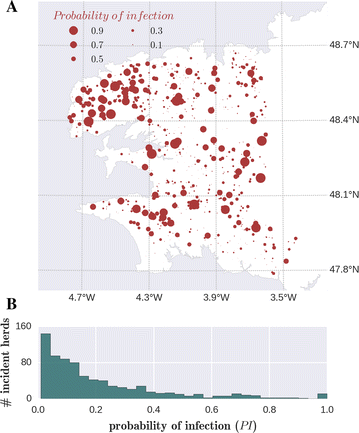Spread of Coxiella burnetii between dairy cattle herds in an enzootic region: modelling contributions of airborne transmission and trade
Published in Veterinary Research, 2016
Recommended citation: Pranav Pandit, Thierry Hoch, Pauline Ezanno, François Beaudeau, and Elisabeta Vergu. "Spread of Coxiella burnetii between dairy cattle herds in an enzootic region: modelling contributions of airborne transmission and trade." Veterinary Research. 47, no. 1 (2016): 1 https://veterinaryresearch.biomedcentral.com/articles/10.1186/s13567-016-0330-4

Abstract
Q fever, a worldwide zoonotic disease caused by Coxiella burnetii, is a looming concern for livestock and public health. Epidemiological features of inter-herd transmission of C. burnetii in cattle herds by wind and trade of cows are poorly understood. We present a novel dynamic spatial model describing the inter-herd regional spread of C. burnetii in dairy cattle herds, quantifying the ability of airborne transmission and animal trade in C. burnetii propagation in an enzootic region. Among all the new herd infections, 92% were attributed to airborne transmission and the rest to cattle trade. Infections acquired following airborne transmission were shown to cause relatively small and ephemeral intra-herd outbreaks. On the contrary, disease-free herds purchasing an infectious cow experienced significantly higher intra-herd prevalence. The results also indicated that, for short duration, both transmission routes were independent from each other without any synergistic effect. The model outputs applied to the Finistère department in western France showed satisfactory sensitivity (0.71) and specificity (0.80) in predicting herd infection statuses at the end of one year in a neighbourhood of 3 km around expected incident herds, when compared with data. The model developed here thus provides important insights into the spread of C. burnetii between dairy cattle herds and paves the way for implementation and assessment of control strategies.
